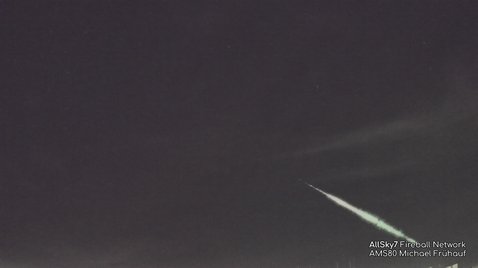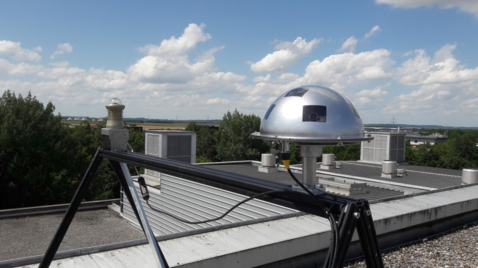Background
Besides the sun, the eight planets and numerous moons, our Solar System consists of countless small bodies. Most of them are located in the so-called asteroid belt between Mars and Jupiter, as well as in the outer regions of the system. Even if our Solar System seems to be very stable at first sight, the system is dynamic on astronomical time scales. Especially small bodies can change their orbits strongly and can get on a collision course with the Earth. If it is only a dust piece up to a centimeter-sized meteoroid, we can observe their entry into the Earth's atmosphere as harmless meteors (shooting stars), where they burn up. The meteors of larger objects are called fireballs and can be observed even in broad daylight. At sizes of ten meters or more, shock waves can cause serious damage to people and property, eventually culminating in global destruction in the case of kilometer-sized asteroids or comets. Fortunately, there are fewer "large" small bodies than "small" small bodies, which is why an impact of a so-called global killer is very unlikely, while shooting stars can be observed nightly.
How many Small Solar System Bodies exist and what their size and orbit distribution is, has been a research topic for a long time, but answering this question has turned out to be quite difficult. "Larger" objects can be found in space with the help of telescopes, while "smaller" objects, due to their large number, often collide with Earth, where they are observed with cameras as meteors. There is a gap of objects which are too small for telescopes and at the same time rarely collide with Earth. This gap shall be closed with this project.
Objective

In this project, we are investigating the number, size distribution, flux, and origins of decimeter to meter-sized meteoroids colliding with Earth. The overall goal of the research is to close the current gap in our knowledge of the distribution of interplanetary dust and asteroids.
For this purpose, we participate in the analysis of fireball network observational data and do orbit simulations.
Cameras

We have been operating two complementary meteor cameras since September 2021 to actively participate in fireball observations. Both cameras are part of larger networks.
AllSky7 Network: The AllSky7 Fireball Network is operated by amateur astronomers and spread from the USA to Europe, where it is currently expanding rapidly. In addition to the main areas of Germany, the Netherlands, Belgium, Austria and Hungary, there are more cameras in Europe. More and more AllSky7 cameras are being set up in other parts of the world. We operate the station with the name "AMS80".
FRIPON Network: The Fireball Recovery and InterPlanetary Observation Network has its origin in France with additional core areas in Italy and Romania. The network is managed by French universities, with FRIPON-Germany coordinated by the University of Oldenburg.
